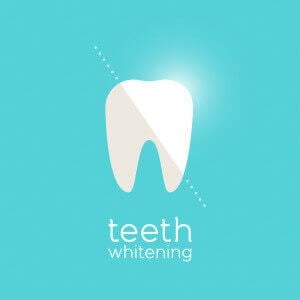
Does whitening damage your tooth enamel? Three things you should consider: You’ve seen their perfect, pearly smiles gracing the cover of People, Cosmo or other magazines: they are celebrities with flawless hair and brilliant white teeth (granted, they may have had some help from Photoshop). It’s clear that in our culture, whitening has become more popular as a method to make your smile sparkle. There are three main methods of tooth whitening. However, there is one important question: Does whitening damage your enamel? Enamel is the hard outside covering of your tooth that is vital to protect the tooth and prevent cavities. Before answering that question, it’s important to know how the various forms of teeth whitening dentist work.
Whitening Strips
These use thin pieces of peroxide-coated plastic to whiten your teeth. It’s simple, convenient, and since only one side of the plastic contains the beaching agent, it has minimal contact with soft tissues such as your gums. The American Dental Association (ADA) says that the most common side effects associated with whitening strips are gum irritation and tooth sensitivity, which typically occur in the early stages of treatment. While they may be a good first step, they may not produce dramatic results. The ADA also cautions that not enough research is available on the long-term effects of consistent and repeated whitening, and it is always important to tell your dentist that you are using whitening strips.
Whitening Toothpaste
Whitening toothpastes use chemical agents to reduce surface stains. This technique does not use bleach. When selecting whitening toothpaste, look for the ADA Seal of Acceptance. This seal means the product has met the standards for safety and effectiveness as determined by the ADA.
Professional Teeth Whitening Performed In A Dental Office
This uses a higher concentration of hydrogen peroxide than the over-the-counter whitening strips. A dentist may use laser gum therapy, and the session is completed in a matter of hours rather than the two- to four-week period suggested for whitening strips. The bottom line? These products shouldn’t damage your enamel as long as you follow the recommendations of your dentist and have regular check-ups so he or she can evaluate your teeth. In addition, here are three things you should consider:
- Those with fillings, crowns and other extensive dental work should not begin whitening without speaking to the dentist first to ensure the bleaching will not damage your dental work. Together, you can tailor a treatment plan that should achieve the desired results. The ADA only recommends the use of whitening products under the supervision of a dentist.
- While the ADA does provide its seal of approval to certain products, realize that manufacturers submit their products for ADA approval voluntarily—there is no federal requirement. In fact, tooth-whitening products are not regulated by the FDA.
- Research results are mixed as to whether or not whitening damages your enamel. In higher concentrations, peroxide can cause the enamel surface to wear away. The best bet is to play it safe and follow your dentist’s recommendations.
Before you begin a whitening regimen, examine the tooth colored fillings of your teeth. Teeth with yellow discoloration will generally respond better to the process than those with brown discoloration. Drinking excessive amounts of coffee or tea or other teeth-staining products may present a greater challenge to get that perfect smile.
Sources: American Dental Association. “ADA Policies and Statements: Tooth Whitening Safety and Effectiveness.” Animated-teeth.com. “Teeth Whitening Strips –What Are They?”

